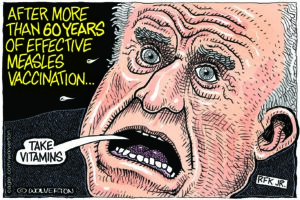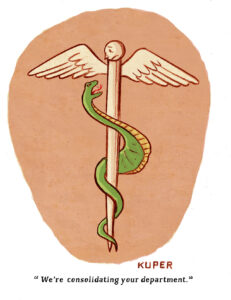As Cases Rise, COVID Data Quietly Vanishes
Concerned citizens call for more funding after “major blow” to key COVID-19 tracking metric. Image: Adobe
Image: Adobe
California-based engineer and scientist Patrick Vaughan made a troubling discovery July 10. Dozens of facilities providing COVID-19 wastewater data went offline, seemingly overnight.
Vaughan had been following WastewaterSCAN, a national program that monitors wastewater for diseases. He noticed that 42 of the previously reporting 194 facilities suddenly displayed small blue triangles with the message “data is no longer collected from this site.” The development came just as people across the United States scrambled for information during a summer COVID wave that infected even President Joe Biden.
“This is a major blow to our COVID wastewater tracking abilities,” Vaughan told his followers in a video he posted the same day.
Wastewater, which comes from processes such as laundry or toilet flushing, has emerged as a key indicator for the prevalence of COVID-19 in the general population since testing rates plummeted in 2022. State and federal governments have also unraveled many of the other metrics used to track the virus. For example, as of May 1, U.S. hospitals are no longer required to report key COVID data to the government. Several states have also stopped tracking COVID-19 infection rates altogether.
Still, wastewater surveillance is plagued by the same inconsistencies and lack of resources that other metrics have suffered from in the past, and the data isn’t easy for most people to interpret.
Dozens of facilities providing COVID-19 wastewater data went offline, seemingly overnight.
Dom Kelly is president and CEO of the disability justice organization New Disabled South. He lives in Georgia, headquarters for the Centers for Disease Control and Prevention (CDC) and one of the states that unceremoniously stopped updating its public COVID dashboard this spring.
“It says a lot that we are here and we are currently in an enormous COVID surge with little-to-no infrastructure to deal with the enormous surge that we’re in,” he told Prism.
Those interested in keeping up to date with COVID data — and gauging their risk of catching or spreading the virus in their communities — now have to chase down information as the pandemic wears on, moving from one resource-strapped program to another.
Vaughan used to check the Johns Hopkins Coronavirus Resource Center every day until it shut down in March 2023, citing a slowdown of reporting from states. Vaughan then came across Biobot Analytics, a startup that specializes in wastewater epidemiology. At the time, Biobot was working to help expand the CDC’s National Wastewater Surveillance System (NWSS). However, the CDC ended its contract with Biobot last summer and opted to work with health technology company Verily instead — a move that saved the federal government millions of dollars but left big gaps in data.
Biobot contributed data from more than 400 locations during its participation in NWSS. In contrast, Verily (WastewaterSCAN’s lab partner) provided logistics and lab services to about 200 sites. Vaughan found the decrease in data alarming.
Neither WastewaterSCAN nor Verily made public announcements on July 10, when more than 40 facilities were removed from the surveillance program. It would take over a week for WastewaterSCAN to post a brief program update that merely mentioned a “change in the number of sites sampling.” The company said it worked with wastewater plants and public health officials to determine “the mix of sites that are working with us in this next phase.”
The remaining sites only provide information from 40 states and Washington, D.C., leaving 10 states completely out of the program.
“So if you’re in one of those states, you’re kind of [out of luck],” Vaughan said. “I have to go hunt down my local wastewater facilities and pray that they’re actually doing surveillance that has a public dashboard, that they’re updating the public dashboard, that they still are funded at the state level for that since they’re not a part of the program.”
“It says a lot that we are here and we are currently in an enormous COVID surge with little-to-no infrastructure to deal with the enormous surge that we’re in.”
In an email to Prism, WastewaterSCAN said the program’s next phase will include research into detecting more pathogens, and that other programs like CDC NWSS will still build a national system for wastewater surveillance. While the company doesn’t contract directly with NWSS, WastewaterSCAN does provide relevant data to the NWSS database. WastewaterSCAN does not anticipate that the decrease in included facilities will meaningfully impact the quality of its data.
Regardless of the reasons for the change, it clearly concerns those who are no longer represented by the program. One X user posted that they “almost cried” when WastewaterSCAN stopped monitoring their community.
“I saw surges, warned people, showed them your receipt and they listened,” the user posted in response to WastewaterSCAN’s program update thread. “We need you more now,” they continued.
The degradation of COVID data in all its forms presents a particular risk for disabled and immunocompromised people, some of whom may have been disabled by long COVID.
“It’s an indication of the willingness to leave disabled and chronically ill people behind, specifically when there’s a loss of investment in the very basic baseline data that we are currently even gathering around COVID at all,” Kelly said.
In the absence of a single robust COVID tracking resource, individual health experts and members of the public alike have dedicated their time to compiling the piecemeal information available so that others can access it. Medical scientist Michael Hoerger, for example, applies his experience in clinical research as the director of the Pandemic Mitigation Collaborative, a COVID-19 forecasting model. Meanwhile, Vaughan leverages his science background to interpret data and share it with others. He also compiles lists of COVID resources.
Still, Kelly, Vaughan and even Biobot CEO and co-founder Mariana Matus say that wastewater surveillance work should be the responsibility of government agencies. In Vaughan’s opinion, that means state and federal governments need to set aside funding specifically for wastewater monitoring.
“It’s pretty much solely on the government. They’re the ones that need to act,” Vaughan said. “If we say bird flu with the H5N1 is our next pandemic and we’re continuously degrading our wastewater facilities, how are we going to be able to monitor and catch up with that is the big question — let alone to continue monitoring COVID.”
Dig, Root, GrowThis year, we’re all on shaky ground, and the need for independent journalism has never been greater. A new administration is openly attacking free press — and the stakes couldn’t be higher.
Your support is more than a donation. It helps us dig deeper into hidden truths, root out corruption and misinformation, and grow an informed, resilient community.
Independent journalism like Truthdig doesn't just report the news — it helps cultivate a better future.
Your tax-deductible gift powers fearless reporting and uncompromising analysis. Together, we can protect democracy and expose the stories that must be told.
This spring, stand with our journalists.
Dig. Root. Grow. Cultivate a better future.
Donate today.








You need to be a supporter to comment.
There are currently no responses to this article.
Be the first to respond.